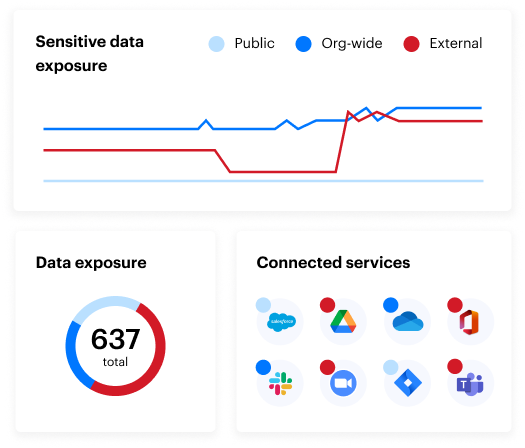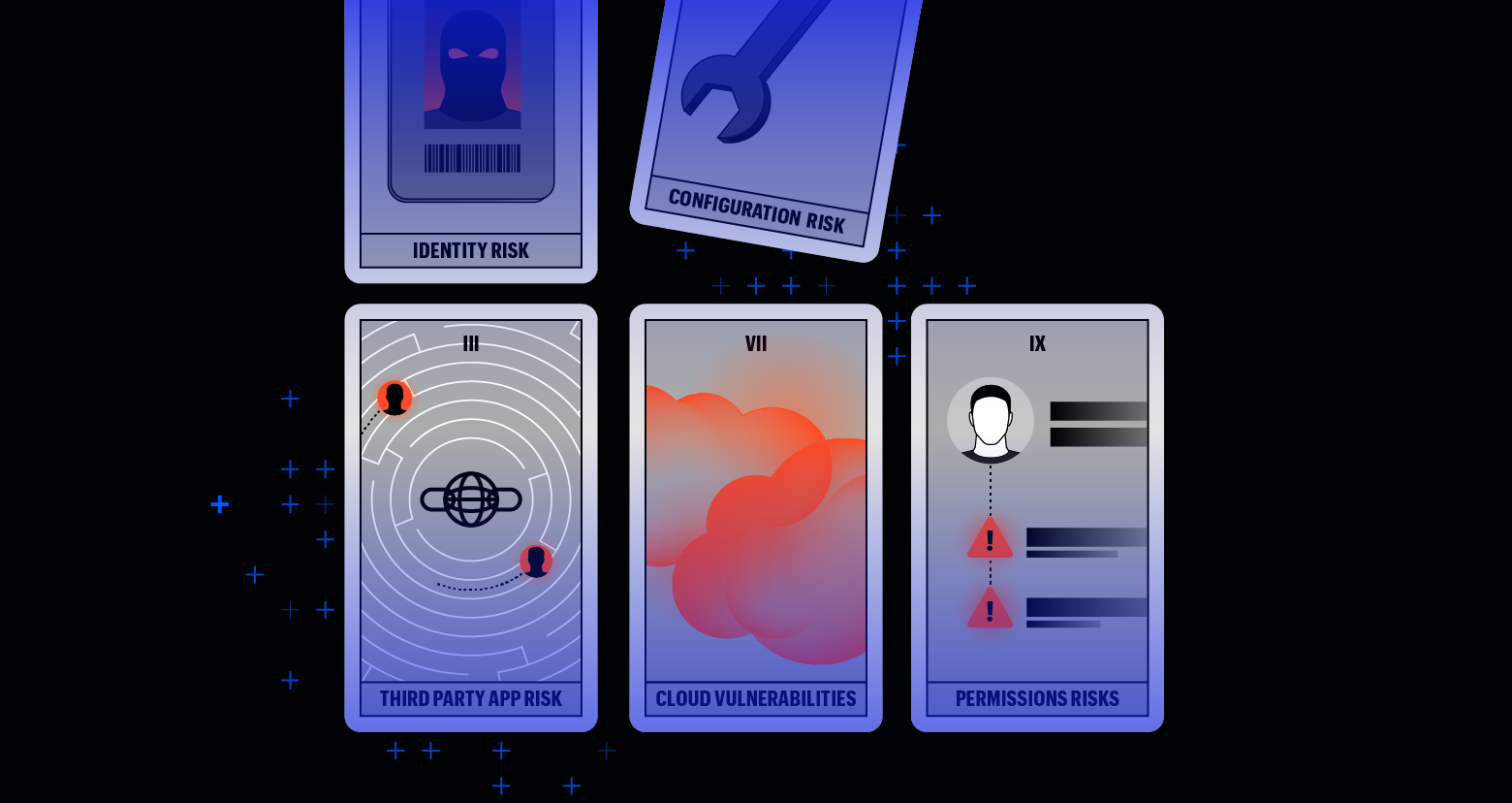Poor cloud security can lead to data breaches, compliance issues, and reputational damage. Implementing robust cloud security measures is crucial to mitigate these risks and ensure the safety of your data and applications.
In this blog, we’ll highlight the importance of cloud security and how to protect your cloud environment.
What is cloud security?
Cloud security involves the strategies, best practices, controls, and technologies aimed at protecting applications, data, and infrastructure in cloud environments. It focuses on securing storage and networks from both internal and external threats, managing access, ensuring data governance and compliance, and supporting disaster recovery.
Varonis enhances cloud security by providing solutions that offer visibility, automation, and threat detection, ensuring that your cloud environment remains secure and compliant.
What does cloud security protect?
Cloud security focuses on three main pillars:
- Data: Ensuring that sensitive information is protected from unauthorized access and breaches.
- Applications: Safeguarding applications running in the cloud from vulnerabilities and attacks.
- Infrastructure: Protecting the underlying cloud infrastructure, including servers, storage, and networks.
Cloud security vs. traditional security
Many organizations are shifting to cloud security because it offers greater scalability and flexibility compared to traditional security methods. With cloud security, businesses can easily adjust their security measures as they grow, without the need for significant upfront investments in hardware. Additionally, cloud providers often offer advanced security features and rapid deployment options, making it easier for companies to stay protected against emerging threats
Traditional security relies on a perimeter-based approach, where defenses are built around the network's edge. However, cloud environments require a more flexible and granular approach. Cloud security involves securing data and applications at multiple layers, often using advanced techniques like encryption and access management to protect against threats.
Why is cloud security important?
There are several reasons cloud security is important for enterprises. Key areas include:
Growing threat landscape
Cyber threats are constantly evolving, with ransomware and phishing campaigns specifically targeting cloud environments. These threats can compromise sensitive data and disrupt business operations, making it essential to stay vigilant and proactive in your cloud security efforts.
Compliance and governance challenges
Meeting regulatory standards like GDPR, HIPAA, and PCI DSS is critical in cloud environments. Compliance ensures that your organization adheres to legal requirements and protects sensitive data, reducing the risk of penalties and breaches.
Key aspects of cloud security
Cloud security is all about protecting your data and applications in the cloud. It involves measures like encryption, access controls, and continuous monitoring to ensure your information stays safe.
By leveraging advanced security features offered by cloud providers, businesses can stay ahead of potential threats and maintain compliance with industry regulations
Shared responsibility model

In the shared responsibility model, cloud providers are responsible for securing the infrastructure, while customers are responsible for securing their data and applications. For example:
- IaaS (Infrastructure as a Service): Providers secure the infrastructure, while customers handle the operating systems, applications, and data. Examples include Amazon Web Services (AWS), Microsoft Azure, and Google Cloud Platform (GCP).
- PaaS (Platform as a Service): Providers manage the platform, and customers focus on their applications and data. Examples include Heroku, Google App Engine, and Microsoft Azure App Service.
- SaaS (Software as a Service): Providers manage everything except data and user access. Examples include Google Workspace, Salesforce, and Microsoft 365.
Automation and continuous monitoring
Automated solutions like Varonis help identify misconfigurations and enforce security baselines. Continuous monitoring ensures that any anomalies or threats are detected and addressed promptly, maintaining the security of your cloud environment.
Common cloud security challenges
Organizations face several challenges in securing cloud environments, including misconfigurations, lack of visibility, and insider threats. Lack of visibility is a significant challenge in cloud security because it makes it difficult for organizations to monitor and manage their cloud environments effectively.
Without comprehensive visibility, it's hard to detect unauthorized access, misconfigurations, and potential security threats in real-time. This can lead to delayed responses to incidents and increased risk of data breaches.
Additionally, managing security across multiple cloud platforms becomes more complex without a clear view of all assets and activities. Ensuring robust visibility is crucial for maintaining a secure and compliant cloud environment.
Addressing these challenges is crucial to maintaining a secure cloud infrastructure.
Best practices for cloud security
To improve your cloud security posture, consider the following best practices:
Enforce Zero Trust principles
The Zero Trust principle is a security concept that operates on the idea that no entity, whether inside or outside the network, should be trusted by default. Instead, every access request must be verified before granting permission.
Zero Trust involves continuously verifying every user and device with multi-factor authentication and regular security checks. It grants users the least privilege necessary to reduce unauthorized access risks and uses micro-segmentation to contain breaches.
Operating under the assumption that breaches will occur, it encourages proactive threat detection and response.
Secure all phases of the data lifecycle
To secure all phases of the data lifecycle, start by classifying your data based on sensitivity and importance. Use strong encryption and access controls to protect data at rest and in transit.
Implement role-based access controls and multi-factor authentication to ensure only authorized users can access sensitive information. When archiving or disposing of data, use secure methods to prevent unauthorized recovery.
By following these steps, you can keep your data safe from creation to disposal.
Integrate advanced threat detection
Leverage solutions like Varonis to detect abnormal behavior and reduce risk. Advanced threat detection helps identify potential threats before they can cause harm, allowing for proactive measures to mitigate risks and protect your cloud environment.

Benefits of strong cloud security
Implementing effective cloud security strategies offers several advantages:
Reduced risk of breaches
Strong security measures minimize the likelihood of data breaches and unauthorized access. Implementing comprehensive security protocols can significantly lower the risk of cyberattacks and data loss.
Improved operational efficiency
Automated security tools and continuous monitoring streamline security processes, enhancing overall efficiency. This will allow your IT team to focus on other critical tasks while maintaining a secure cloud environment.
Enhanced customer trust
Robust cloud security builds trust with customers, demonstrating your commitment to protecting their data and maintaining compliance.
By following these guidelines and leveraging advanced security solutions, you can ensure that your cloud environment remains secure and resilient against evolving threats.
Secure your cloud environment today
Don't leave your cloud security to chance. Implementing robust security measures is crucial to protecting your data, applications, and infrastructure from evolving threats.
With Varonis, you can enhance your SaaS and IaaS security posture through advanced visibility, automation, and threat detection solutions.
Learn how to reduce your risk with our free Data Risk Assessment. It takes minutes to set up and delivers immediate value. In less than 24 hours, you’ll have a clear, risk-based view of the data that matters most and a clear path to automated data security.
What should I do now?
Below are three ways you can continue your journey to reduce data risk at your company:
Schedule a demo with us to see Varonis in action. We'll personalize the session to your org's data security needs and answer any questions.
See a sample of our Data Risk Assessment and learn the risks that could be lingering in your environment. Varonis' DRA is completely free and offers a clear path to automated remediation.
Follow us on LinkedIn, YouTube, and X (Twitter) for bite-sized insights on all things data security, including DSPM, threat detection, AI security, and more.





